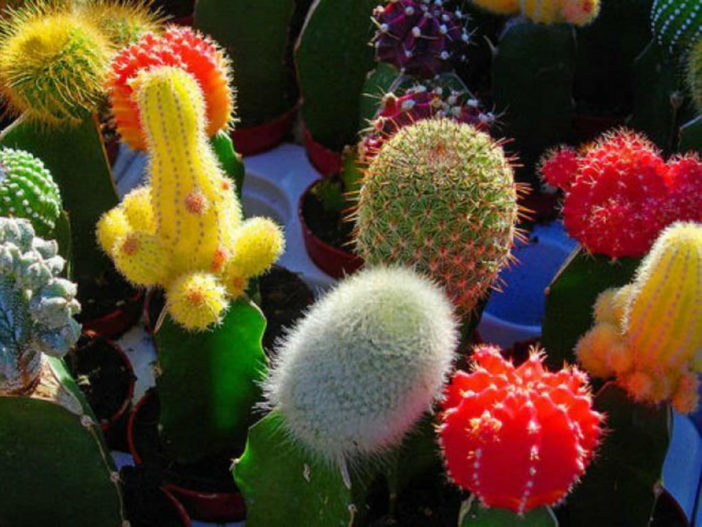Grafting cacti is a process where a cut piece of one species is grown onto a wounded piece of another. It is a straightforward method of propagation that even a novice gardener can try.
Cacti are easy to propagate through grafting, stem cuttings, leaf cuttings, seed, or offsets. However, growing cacti from seeds is a long process, as germination may be unreliable and growth is at a snail's pace. Broadly, cacti that do not produce offsets can be propagated by grafting if there is a compatible rootstock. The grafted part is called a scion, and the base or rooted part is the rootstock.
Grafting Guide
Cacti are grafted for a variety of reasons. One may be to produce a different species mechanically. Still, the process also produces disease-free stems to provide a new stem for an existing stem that is rotting or enhancing photosynthesis in plants that lack the ability. Grafting cacti is also done to create unique forms, such as weeping plants.

Grafting is common in fruiting plants because it increases the maturity of an existing cultivar for earlier fruit production. The scion becomes the top part of the plant with all the originating species' characteristics. The rootstock becomes the roots and base of the plant. The union is at the vascular cambium, where the wounds of scion and rootstock are sealed together to heal and join. Once the joining wounds have healed, no special grafted cactus care is required. Grow it as you would any other cactus.
Rootstock Cactus
The generally approved rootstocks for grafting cactus are Hylocereus trigonus or Hylocereus undatus, Cereus repandus, and Echinopsis spachiana.
Also, the compatibility is excellent if the rootstock and scion are of the same species. Compatibility decreases as the family relationship decreases. Two plants in the same genus may possibly graft, but two in the same genera are rare, and two in the same family are very rare. Therefore, the appropriate cacti for grafting are the ones of the same species and with as close a relationship as possible for the best outcome.
How to Graft a Cactus
Use very clean, sterile instruments when making cuts. Choose healthy plants and prepare a scion. Cut off the top or at least a 1-inch (2.5 cm) stem. Then prepare the rootstock by beheading a cactus within a few inches of the soil.
Set the scion on top of the cut portion of the still-rooted rootstock so both vascular cambia are situated together. Use rubber bands to hold the pieces joined as one.
Grafted cactus care is the same as ungrafted cactus. Watch for any insects at the union or rot. You can remove the rubber bands in about two months, and the union should be sealed.
Source: gardeningknowhow.com
Links
- Succupedia: Browse succulents by Scientific Name, Common Name, Genus, Family, USDA Hardiness Zone, Origin, or cacti by Genus
